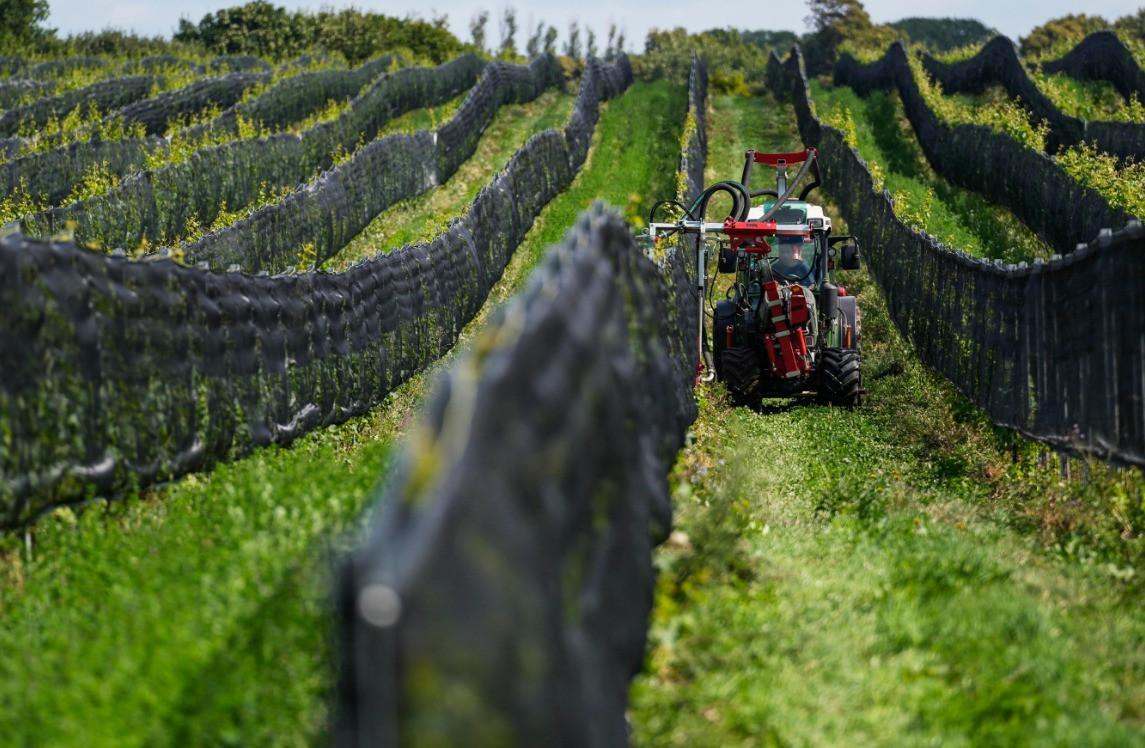
It’s mid-afternoon in late summer and a fresh North Sea breeze blows through the vines at Kullabergs Vingård, a vineyard and winery at the vanguard of producers seeking to redefine what Swedish wine can be.
Scandinavia isn't exactly what connoisseurs would define as prime wine country and commercial vineyards are still tiny compared to France, Italy or Spain. But with climate change making for warmer and longer growing seasons, and new varieties of grapes adapted to this landscape, the bouquet of Swedish wines is maturing nicely.
As drought, rising heat and other extreme weather events are forcing traditional wine-growing regions to reassess their methods, Swedish winemaking is shifting from mostly small-scale amateurs to an industry with growing ambition.
Kullabergs Vingård stretches over 14 hectares (about 34 acres) and most of the vines were planted less than a decade ago. By 2022, the winery had reached an annual output of over 30,000 bottles — mostly whites that can be found in high-end restaurants from Europe to Japan to Hong Kong and that have won multiple international prizes.
“Where vineyards in more traditional countries are suffering, we are gaining momentum,” said Felix Åhrberg, a 34-year-old oenologist and winemaker who returned to Sweden in 2017 to lead Kullabergs Vingård after working in vineyards around the world.
Grapevines can tolerate heat and drought, and farming without irrigation is traditionally practiced in parts of Europe. But the past decade has seen the planet's hottest years on record, and more warming is expected. That can hit wine, where even minor weather variations can change grapes’ sugar, acid and tannin content.
Climate change can make areas once ideal for certain grapes more challenging. Extreme heat ripens grapes faster, leading either to earlier harvests that can diminish quality, or to stronger, less balanced wines if left to ripen too long.
In recent years, grapevines have been planted farther and farther north, with commercial vineyards appearing in Norway and Denmark and others, including in the American West, expanding into cooler zones. The United Kingdom, famous for its ales and bitter beers, expects the area under vines to double in the next 10 years fueled by demand for its sparkling wines.
“This is the new frontier of winemaking and grapes grow best on their coolest frontier,” Åhrberg said as he walked through Kullabergs Vingård’s newly built winery, an Instagram-friendly gem worthy of design magazines that was built with sustainability in mind and capacity of three times the current volume.
The widespread adoption of new varieties of disease-resistant grapes is also credited with Swedish wine's growth. Most vineyards have planted a grape called Solaris, developed in Germany in 1975, that is adapted to the cooler climate and more resistant to diseases. That enables most vineyards to avoid using pesticides.
“Solaris is like the national grape variety here in Sweden,” said Emma Berto, a young French oenologist and winemaker at Thora Vingård on the Bjäre peninsula, about 20 kilometers north of Kullabergs Vingård.
She and her partner, Romain Chichery, moved to Sweden shortly after finishing their viticulture studies in France, attracted by the chance to run a vineyard and winery so early in their careers.
They say they face fewer extreme climate incidents in Sweden than in France, where warming winters can cause grape vines to produce early buds vulnerable to frost, and violent hailstorms can destroy a year of work in minutes. And Chichery said they have greater freedom to experiment in Sweden than in countries steeped in tradition and regulations, like France.
But working in cooler and damper conditions has meant learning new methods. While vineyards in hot climates would protect their grapes with more leaf canopy, here it’s the opposite. Leaves are picked from the bottom of the plant to let more sunshine reach the grapes and reduce humidity.
Attracting trained wine professionals is a hurdle, too, along with difficulty getting wine barrels and other equipment to scale up.
Thora Vingård owners Johan and Heather Öberg said Swedish universities offer little on winemaking or viticulture, something they hope will change soon.
For now, lots of the talent comes from abroad — like Iban Tell Sabate, who comes from the wine-growing Priorat region in Spain and has spent decades in the industry.
He had read about Sweden's wine industry but said most people he spoke to back home didn’t know of it. He’s working the season at the Kullabergs Vingård alongside colleagues from France and Austria.
“Italy, Greece, Spain, all these countries are going to face problems. There's not enough water, and the winters are too warm,” Sabate said.
“With global warming, Sweden’s in a good position and it’s a good wine too."
Maarten van Aalst, director general of the Royal Netherlands Meteorological Institute and a professor in climate and disaster resilience at the University of Twente, saw the optimism for growth in Swedish wine as an indicator of how quickly the world's climate is changing. Businesses “have good feelers for that,” he said, and called it positive that “climate change is partly something we can adapt to.”